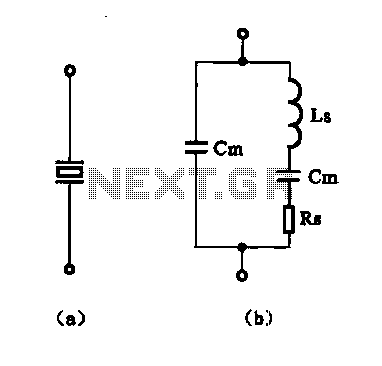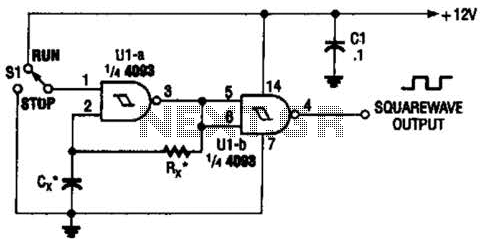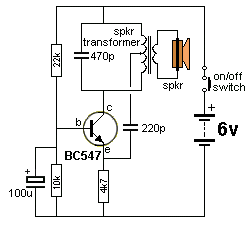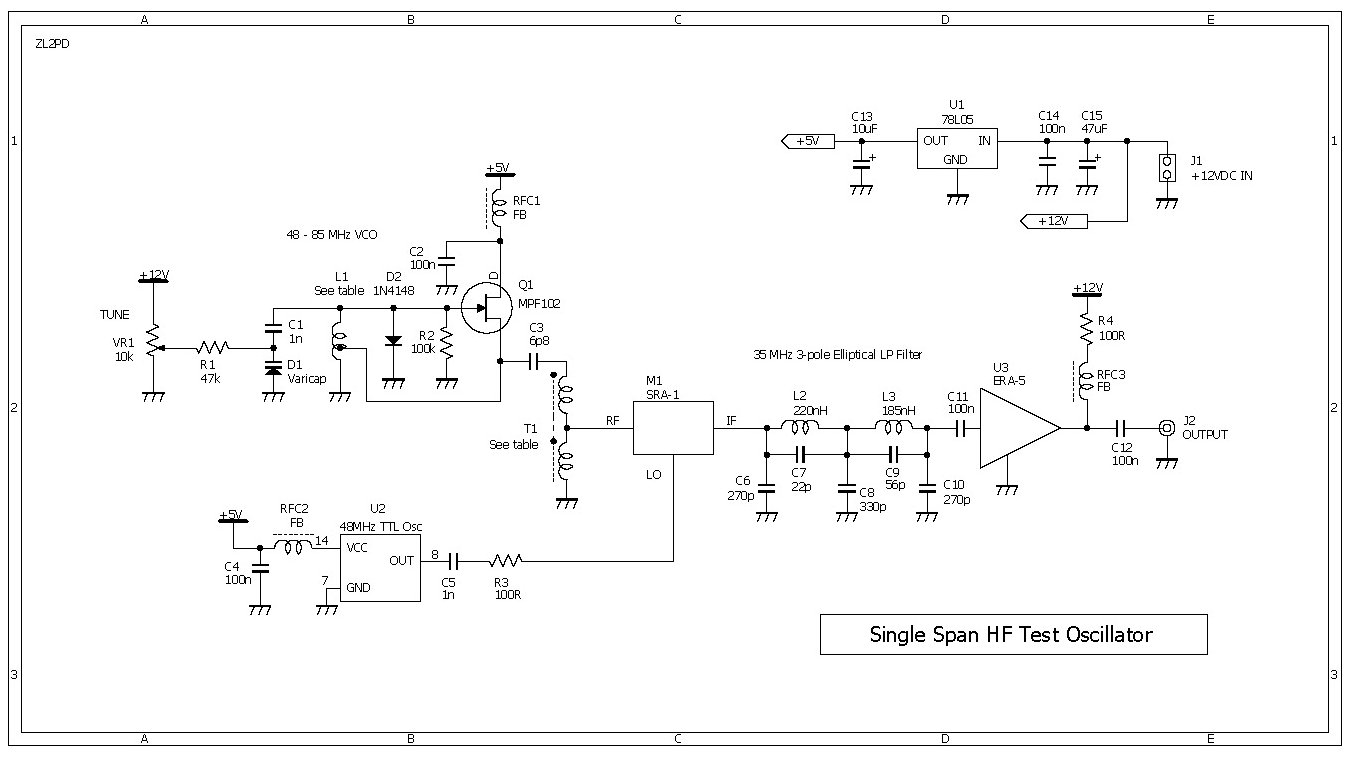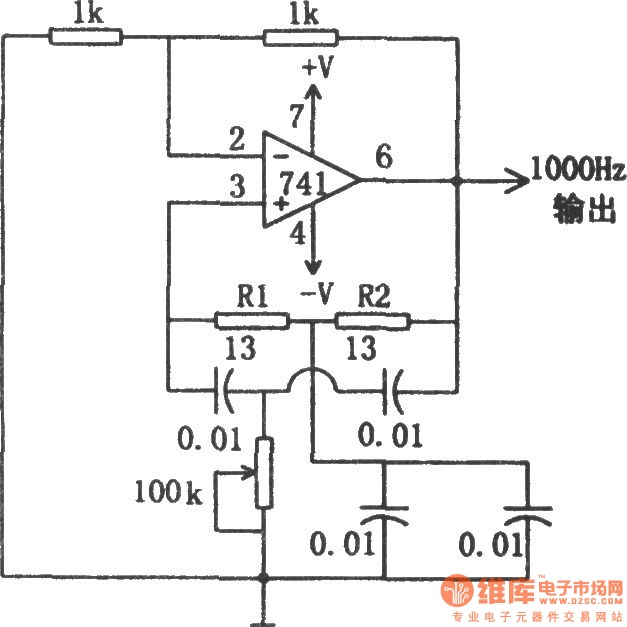
Crystal oscillator provides low noise
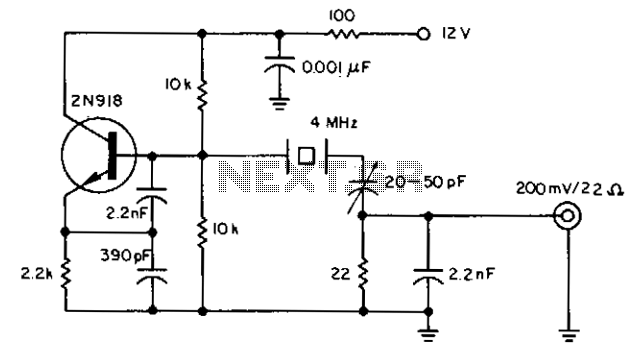
The oscillator provides an output with high spectral purity while maintaining the typical stability associated with crystal oscillators. The crystal not only sets the oscillator's frequency but also functions as a low-pass filter to eliminate unwanted harmonics and as a bandpass filter to reduce sideband noise. The noise bandwidth is restricted to less than 100 Hz, and higher harmonics are significantly suppressed, with the third harmonic of the 4-MHz fundamental oscillator frequency being attenuated by 60 dB.
The described oscillator circuit utilizes a crystal to achieve both frequency stabilization and noise filtering. The crystal oscillator operates at a fundamental frequency of 4 MHz, which is the primary frequency of oscillation. The crystal's inherent properties allow it to maintain a stable frequency output, which is critical in applications requiring precise timing and frequency control.
In addition to frequency determination, the crystal acts as a low-pass filter. This filtering capability is essential for attenuating unwanted harmonics that could distort the output signal. Specifically, the third harmonic, which is three times the fundamental frequency, is attenuated by 60 dB. This level of suppression ensures that the oscillator output remains clean and free from significant harmonic distortion, which is crucial for high-fidelity applications.
Furthermore, the oscillator's design incorporates a bandpass filtering mechanism for sideband noise. By limiting the noise bandwidth to less than 100 Hz, the circuit effectively minimizes the impact of noise on the output signal. This characteristic is particularly important in communication systems and precision measurement equipment, where noise can adversely affect performance.
Overall, the combination of high spectral purity, effective harmonic suppression, and limited noise bandwidth makes this oscillator suitable for a wide range of applications, including signal generation for RF communication, clock generation in digital circuits, and other scenarios where stable and clean frequency signals are paramount.The oscillator delivers an output of high spectral purity without any substantial sacrifice of the usual stability of a crystal oscillator. The crystal in addition to determining the oscillator's frequency, is used also as a low-pass filter for the unwanted harmonics and as a bandpass filter for the sideband noise.
The noise bandwidth is limited to less than 100 Hz. All higher harmonics are substantially suppressed—60 dB down for the third harmonic of the 4-MHz fundamental oscillator frequency. 🔗 External reference
The described oscillator circuit utilizes a crystal to achieve both frequency stabilization and noise filtering. The crystal oscillator operates at a fundamental frequency of 4 MHz, which is the primary frequency of oscillation. The crystal's inherent properties allow it to maintain a stable frequency output, which is critical in applications requiring precise timing and frequency control.
In addition to frequency determination, the crystal acts as a low-pass filter. This filtering capability is essential for attenuating unwanted harmonics that could distort the output signal. Specifically, the third harmonic, which is three times the fundamental frequency, is attenuated by 60 dB. This level of suppression ensures that the oscillator output remains clean and free from significant harmonic distortion, which is crucial for high-fidelity applications.
Furthermore, the oscillator's design incorporates a bandpass filtering mechanism for sideband noise. By limiting the noise bandwidth to less than 100 Hz, the circuit effectively minimizes the impact of noise on the output signal. This characteristic is particularly important in communication systems and precision measurement equipment, where noise can adversely affect performance.
Overall, the combination of high spectral purity, effective harmonic suppression, and limited noise bandwidth makes this oscillator suitable for a wide range of applications, including signal generation for RF communication, clock generation in digital circuits, and other scenarios where stable and clean frequency signals are paramount.The oscillator delivers an output of high spectral purity without any substantial sacrifice of the usual stability of a crystal oscillator. The crystal in addition to determining the oscillator's frequency, is used also as a low-pass filter for the unwanted harmonics and as a bandpass filter for the sideband noise.
The noise bandwidth is limited to less than 100 Hz. All higher harmonics are substantially suppressed—60 dB down for the third harmonic of the 4-MHz fundamental oscillator frequency. 🔗 External reference
